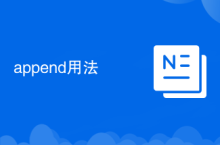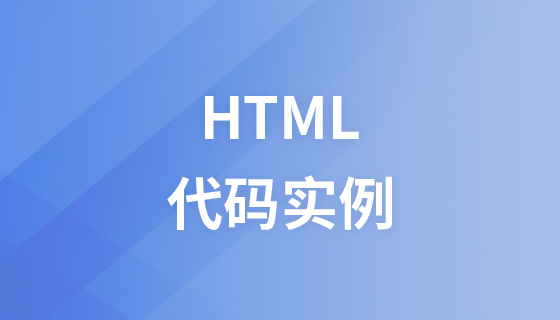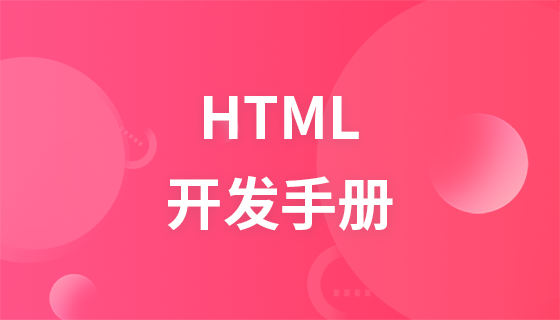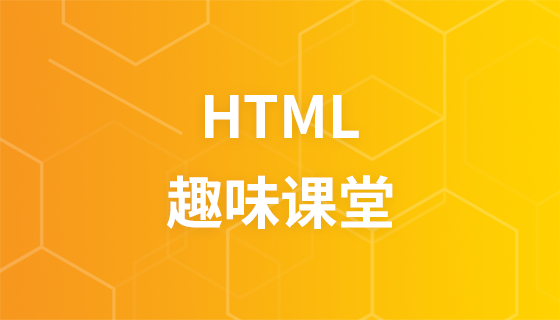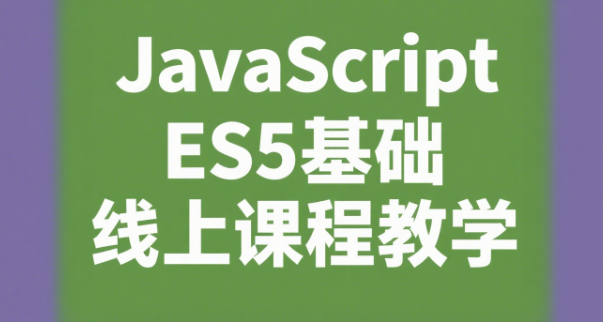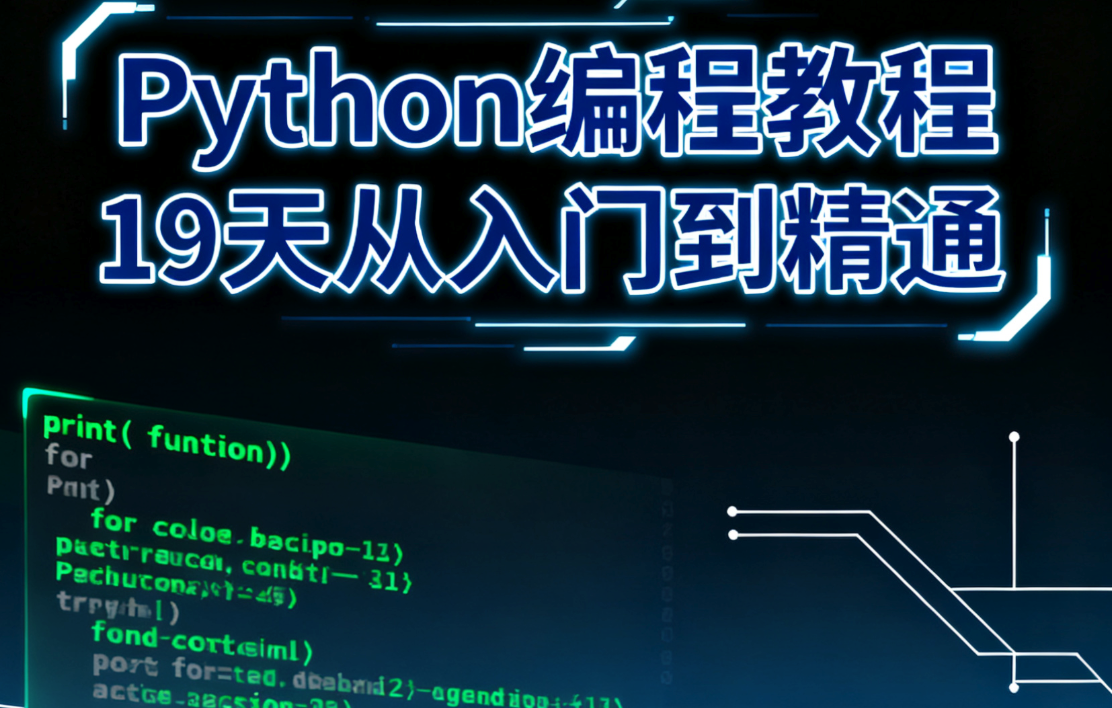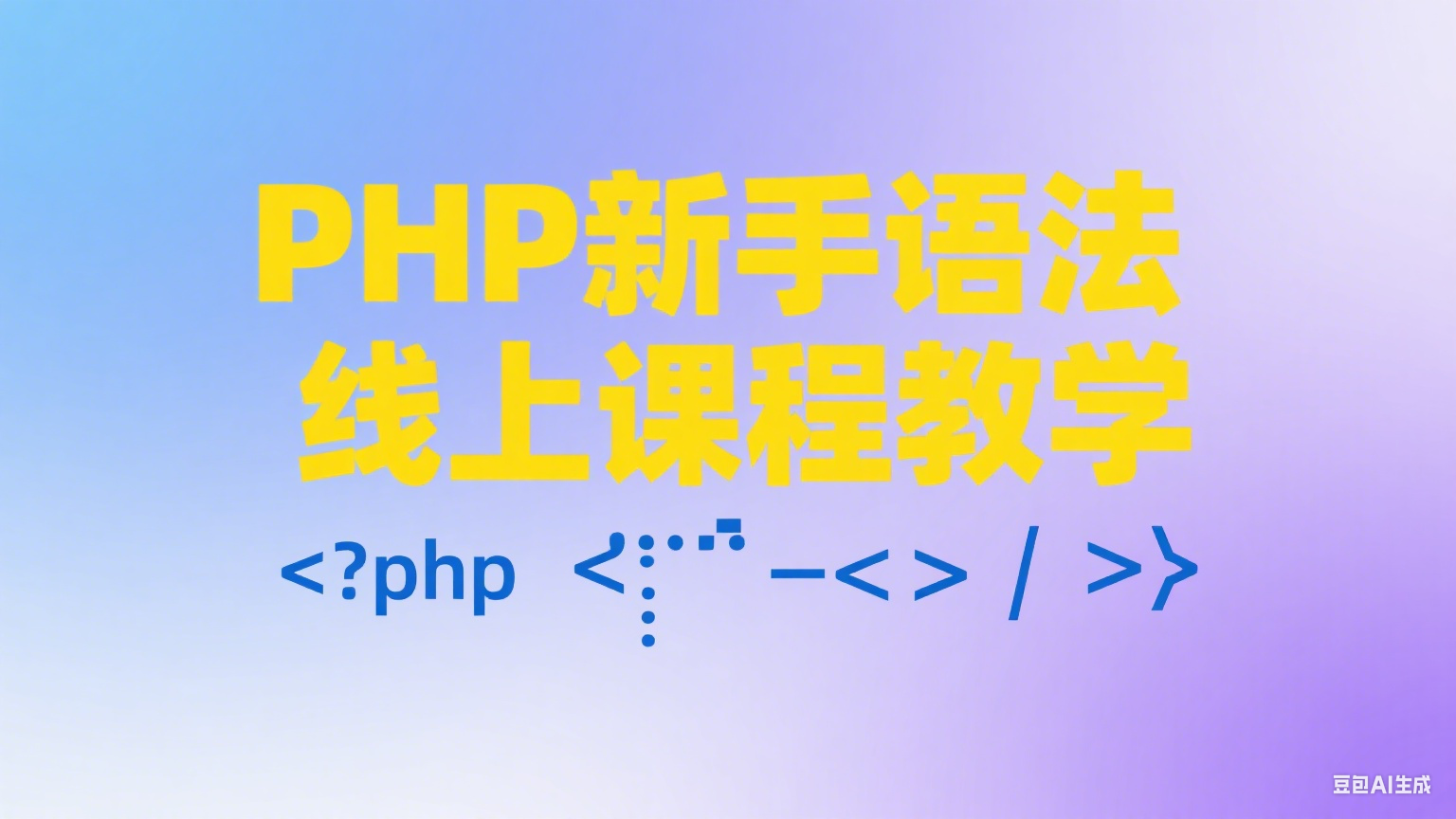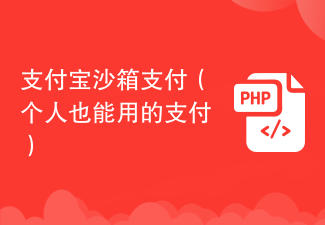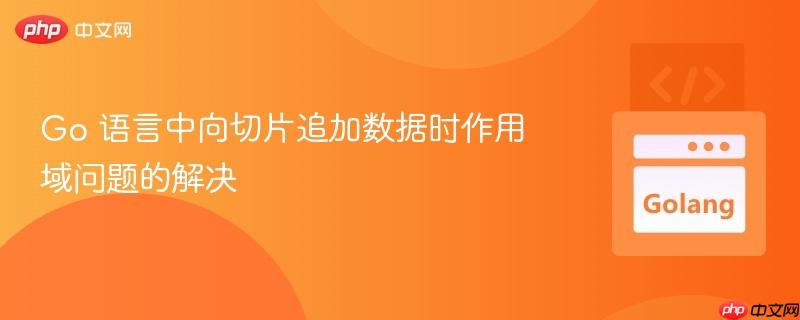
本文旨在帮助 Go 语言开发者理解在循环中向切片追加数据时遇到的作用域问题。通过分析一个常见的错误示例,详细解释了短变量声明对变量作用域的影响,并提供了正确的代码示例和解决方案,以确保数据能够正确地追加到切片中。
在 Go 语言中,向切片追加数据是一个常见的操作。然而,如果在循环内部使用短变量声明(:=)不当,可能会导致意料之外的结果,例如数据无法正确追加到切片中。本文将通过一个实际的例子,深入探讨这个问题,并提供解决方案。
问题分析
以下代码片段展示了一个尝试从数据库查询结果中构建一个 Post 切片的例子:
type Post struct {
Title string
}
func landing(w http.ResponseWriter, r *http.Request) {
posts := make([]Post, 0)
// conn := OpenConnection() // 假设 OpenConnection 函数已定义
// defer conn.Close()
// rows, err := conn.Query("SELECT p.title FROM posts p LIMIT 100")
// if err != nil {
// fmt.Println(err)
// } else {
// for rows.Next() {
// var title string
// rows.Scan(&title)
// posts := append(posts, Post{Title: title}) // 错误发生处
// }
// }
// t, _ := template.ParseFiles("home.html")
// t.Execute(w, posts)
// 为了演示方便,这里使用模拟数据
模拟数据 := []string{"标题1", "标题2", "标题3"}
for _, title := range 模拟数据 {
posts := append(posts, Post{Title: title}) // 错误发生处
}
// 打印结果进行验证
for _, post := range posts {
fmt.Println(post.Title)
}
}
func main() {
// http.HandleFunc("/", landing)
// http.ListenAndServe(":8080", nil)
landing(nil, nil)
}这段代码的意图是,从数据库查询 Post 的标题,并将结果追加到 posts 切片中。然而,在编译时,会收到 posts declared and not used 的错误提示。即使在 append 调用后打印 posts 的值,也会发现每次迭代 posts 的值都被重置,而不是追加。
问题在于循环内部的 posts := append(posts, Post{Title: title}) 这行代码。这里使用了短变量声明 :=,这意味着在循环的每次迭代中,都在创建一个新的、局部作用域的 posts 变量,而不是修改外部作用域的 posts 变量。因此,每次迭代都只是在局部变量 posts 上追加数据,而外部的 posts 切片始终为空。
解决方案
要解决这个问题,需要确保在循环内部使用的是赋值操作符 =,而不是短变量声明 :=。这样,就可以修改外部作用域的 posts 变量。正确的代码如下:
type Post struct {
Title string
}
func landing(w http.ResponseWriter, r *http.Request) {
posts := make([]Post, 0)
// conn := OpenConnection() // 假设 OpenConnection 函数已定义
// defer conn.Close()
// rows, err := conn.Query("SELECT p.title FROM posts p LIMIT 100")
// if err != nil {
// fmt.Println(err)
// } else {
// for rows.Next() {
// var title string
// rows.Scan(&title)
// posts = append(posts, Post{Title: title}) // 正确:使用赋值操作符
// }
// }
// t, _ := template.ParseFiles("home.html")
// t.Execute(w, posts)
// 为了演示方便,这里使用模拟数据
模拟数据 := []string{"标题1", "标题2", "标题3"}
for _, title := range 模拟数据 {
posts = append(posts, Post{Title: title}) // 正确:使用赋值操作符
}
// 打印结果进行验证
for _, post := range posts {
fmt.Println(post.Title)
}
}
func main() {
// http.HandleFunc("/", landing)
// http.ListenAndServe(":8080", nil)
landing(nil, nil)
}通过将 posts := append(posts, Post{Title: title}) 修改为 posts = append(posts, Post{Title: title}),我们告诉 Go 编译器,我们想要修改的是外部作用域中已经声明的 posts 变量,而不是创建一个新的局部变量。
总结与注意事项
- 作用域:理解变量的作用域是避免这类问题的关键。短变量声明 := 会创建一个新的变量,而赋值操作符 = 会修改已存在的变量。
- 短变量声明:在循环内部使用短变量声明时要格外小心,确保你的意图是创建一个新的局部变量,而不是修改外部变量。
- 代码审查:在编写涉及循环和切片操作的代码时,进行代码审查可以帮助你及早发现潜在的问题。
- 调试技巧:如果遇到类似问题,可以使用调试器或 fmt.Println 语句来检查变量的值,以帮助你理解代码的执行流程。
通过理解 Go 语言中变量作用域的规则,并小心使用短变量声明,可以避免这类常见的错误,编写出更健壮和可靠的代码。
以上就是Go 语言中向切片追加数据时作用域问题的解决的详细内容,更多请关注php中文网其它相关文章!

每个人都需要一台速度更快、更稳定的 PC。随着时间的推移,垃圾文件、旧注册表数据和不必要的后台进程会占用资源并降低性能。幸运的是,许多工具可以让 Windows 保持平稳运行。







